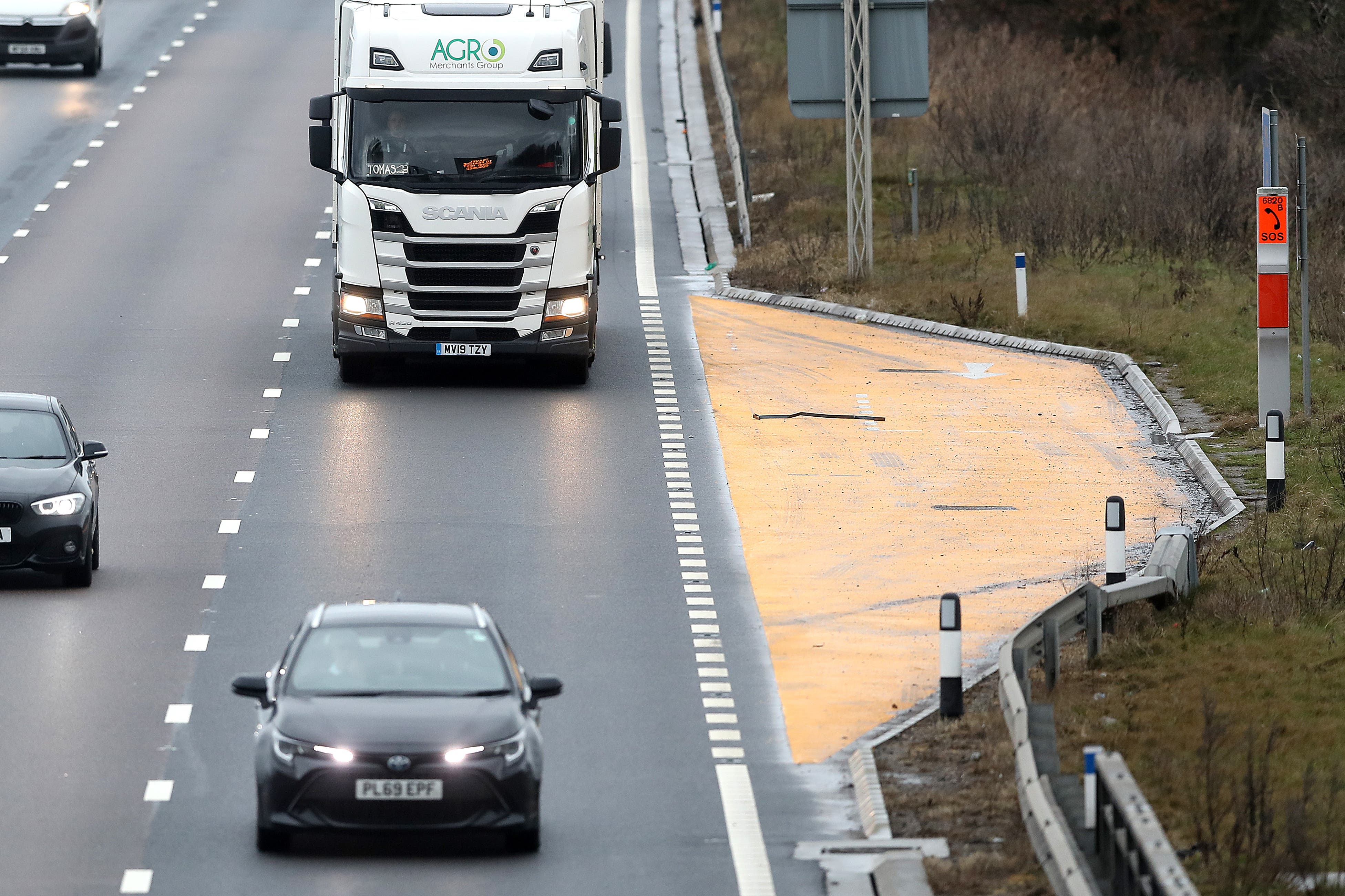National Highways unveils plans for 150 emergency areas for smart motorways
A total of £105 million is being spent on improving technology on smart motorways.

Your support helps us to tell the story
From reproductive rights to climate change to Big Tech, The Independent is on the ground when the story is developing. Whether it's investigating the financials of Elon Musk's pro-Trump PAC or producing our latest documentary, 'The A Word', which shines a light on the American women fighting for reproductive rights, we know how important it is to parse out the facts from the messaging.
At such a critical moment in US history, we need reporters on the ground. Your donation allows us to keep sending journalists to speak to both sides of the story.
The Independent is trusted by Americans across the entire political spectrum. And unlike many other quality news outlets, we choose not to lock Americans out of our reporting and analysis with paywalls. We believe quality journalism should be available to everyone, paid for by those who can afford it.
Your support makes all the difference.National Highways has announced where 150 extra emergency areas are to be created in a bid to make smart motorways safer.
In April, the Government announced the cancellation of planned projects to build all-lane running (ALR) smart motorways, which can use the hard shoulder as a live traffic lane.
Eleven stretches of motorways in England have been identified to be upgraded with the places to stop, while work is already underway on doubling the number of areas on the M1 in south Yorkshire, combined this will bring the total to 150.
It is part of a £900 million scheme aimed at improving the network by 2025, while a total of £105 million is being spent on improving operational technology.
The fundamental problem remains that stopped vehicle incidents are more frequent on all-lane running ‘smart’ motorways compared to motorways with hard shoulders
Nick Harris, chief executive of National Highways, said: “Safety is our highest priority and we are committed to further improving all-lane running motorways.
“We have completed key upgrades to improve the performance of technology to detect stopped vehicles, and today we have set out the next sections of motorway to benefit from the programme to install more than 150 extra emergency areas to give drivers added reassurance.
“We are also continuing to invest £105 million to improve the resilience of our operational technology systems.”
Edmund King, president of the AA motoring group, welcomed the additional safety measures but called for hard shoulders to be reinstated on all motorways.
He said: “The fundamental problem remains that stopped vehicle incidents are more frequent on all-lane running ‘smart’ motorways compared to motorways with hard shoulders.
“To address this, the hard shoulder needs to be reinstated or at the very least the number of emergency areas needs to be radically increased.
“The prospect of breaking down or stopping in a live lane is daunting as our AA call centre operators who take the distressed calls can confirm.
“The advice remains that if you break down in a live lane and can’t exit the vehicle safely via the passenger seat, you should keep your seat belt on, put on hazard lights and other lights and dial 999. It is an emergency.
The safety evidence... continues to show that overall, all three types of smart motorway are safer than conventional motorways in terms of deaths or serious injuries
“We welcomed the scrapping of new ‘smart’ motorways but even with the progress made with new technology on existing ones, more needs to be done to reduce the dangers of live lane stops.
“We have called for more ‘controlled motorways’, which the report shows have lower killed or serious injury rates (KSI) than all-lane running (1.31 compared to 1.43). These motorways have the benefit of ‘smart’ motorway technology whilst also having a hard shoulder.”
A National Highways spokesman said the report “includes the safety evidence (2017 to 2021), which continues to show that overall, all three types of smart motorway are safer than conventional motorways in terms of deaths or serious injuries”.
He added: “Together, the investment in extra emergency areas, along with additional technology like stopped vehicle detection (SVD), better and more signs for emergency areas, and more information about smart motorways online and in an updated Highway Code, aims to help road users feel even safer and more confident on the strategic road network.”
The additional emergency areas will be on:
– M1 junction 16 to 19 in Northamptonshire– M1 junction 23a to 25 in Leicestershire and Nottinghamshire– M1 junction 28 to 30 and 30 to 31 in Derbyshire– M3 junction 2 to 4a in Surrey and Hampshire– M4 junction 10 to 12 in Berkshire– M5 junction 4a to 6 in Worcestershire– M6 junction 21a to 26 in Cheshire– M20 junction 3 to 5 in Kent– M25 junction 5 to 7 in Surrey and Kent– M27 junction 4 to 11 in Hampshire
Work had already begun in June on more than doubling the number of emergency areas on the M1 in South Yorkshire between junctions 32 and 35a.
An additional five emergency areas were also added on the M6 in Staffordshire and eight on the M1 in Bedfordshire and Northamptonshire while motorway upgrades were carried out.